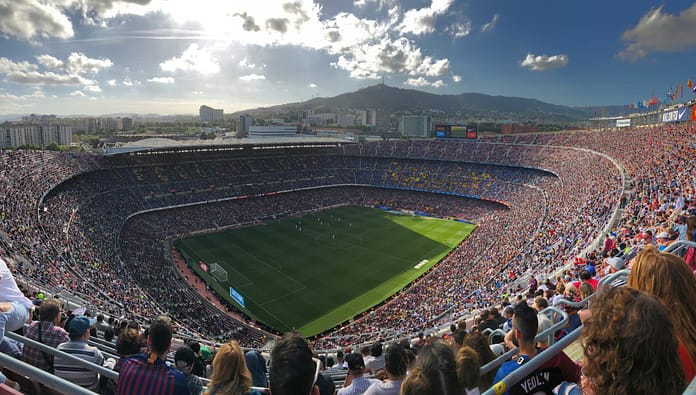Trent Alexander-Arnold’s recent free transfer to Real-Madrid was, undoubtedly, the worst kept secret in football- an expected end to a saga that had dominated the headlines for months. However, it seems that even certainties can offer twists: Real Madrid reportedly paid €10m to register Alexander-Arnold a month before his official contract expiry on July 1st, in order to ensure his participation in Madrid’s Club World Cup run.
Similarly, other participating clubs have also used the unique Club World Cup transfer window to strengthen ahead of the competition, with Manchester City and Chelsea spending a combined £205m. Shockingly, Al-Hilal almost succeeded with an astonishing proposal to take N’golo Kante from Rivals Al-Ittihad on a loan specifically designed for the competition.
These peculiar short term transfer moves seem to paint a distinct picture: Clubs are beginning to place great emphasis on the ability of their squads to compete in the Club World Cup. Why, one could ask, would the titans of modern football suddenly seem to care so greatly about a competition colloquially branded as a ‘mickey mouse’ trophy?
In this article, I wish to explore the main driving factors behind the new financial benefits of the club world cup, and how that is informing the way clubs approach transfer business in the run up to the competition. In the run up to the first iteration of the new format, we have a pattern of transfer business that shows a distinct preference towards the short-term, contrasting the typical long-term approach of most clubs. This article will hopefully illuminate the primary reason for this change in strategy- the flexibility the windfall from the club world cup brings to modern football finance planning.
The New Format
The Club World Cup has undergone a significant financial transformation: it has expanded from a 7 team tournament with a £15m prizepool, to a 32 team competition with a £775m (USD $1B) prize pool. Already, this guarantees clubs a healthy windfall for participation, with European clubs in particular being expected to earn between £9.93–£29.59m.
This provides clubs with the incentive to qualify for the Club World Cup itself, but it doesn’t explain the importance that participating clubs are placing on the competition through their transfers- the answer to this lies in the financial value of deep runs in the competition.
In addition to the participation windfall, clubs that go far into the competition stand to earn record revenues for a single tournament. For example, the club that wins the competition is expected to take home a resounding £97m ($125m). This means that winning the Club World Cup allows clubs to earn amounts similar to the UEFA Champions League’s £115m winner prize pool, despite playing significantly fewer games- only 7 compared to the Champions Leagues’ 13.
A Balancing Act
Speaking from a club’s view, then, a deep run in the club world cup offers such a high financial upside for the amount of games played that paying €10m to get a world-class player for the tournament seems like a fair price to pay. Furthermore, it is not only the amount of money that clubs can earn that is spearheading this short-term mentality in transfer business- it is also what kind of money a tournament generates.
Tournament winnings, for clubs, directly increase revenue. As a result, participation becomes a simple equation for high expenditure clubs: the more revenue a club makes, the more it can spend on player wages, transfer fees and organisational costs, without the pressing need to sell players. For a club like Real Madrid, combining the Champions League revenue with the potential windfall from the club world cup allows them to exercise far more flexibility in the transfer market than before.
Premier league clubs, like Chelsea and Man City, are also painfully aware of this fact: the Premier league’s Profit and Sustainability Rules (PSR) allow for revenue to be used towards the allowed losses a club is able to incur over a three year period. This creates a situation where, if Man City were to win the Club World Cup, the revenue that they receive could directly ‘pay off’ the recent transfers of Tiijani Reijnders and Rayan Cherki- which could give them the ability to spend a similar amount of money on players in future windows.
These examples show two important points. First is that the expanded club world cup provides an unprecedented opportunity for big-spending European clubs to offset previous expenditures, and second, that the opportunity for clubs to do so will change the landscape of how clubs view transfers in the weeks leading up to the Club World Cup.
Perhaps, then, we will see more ‘Alexander-Arnold’ type transfer situations: instances where a club decides that an extreme short-term expenditure is validated by the possibility to secure long-term financial health through a significant cash injection. Or, perhaps, we will see an even shorter-term move, like the proposed type of move Al-Hilal tried to accomplish with N’golo Kante become a cogent and constant reality within the football world. This revamped format of the Club World Cup actively invites clubs to consider a new dimension of strategy: the short-term extreme expenditure of terminating a contract a month early, in order to secure the financial future for the next two years of a club’s transfer business.
Conclusion
Ultimately, a football club reaching the latter stages of the revamped Club World Cup offers a level of financial flexibility that was not previously possible in the modern world of Financial Fair Play. It offers the ability to do away with the ‘pound in, pound out’ model, and place emphasis on continental success in order to fuel domestic success. It is no wonder that clubs are attempting to maximise their chances of achieving this freedom.

